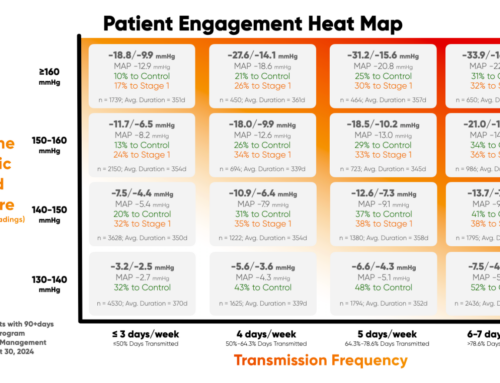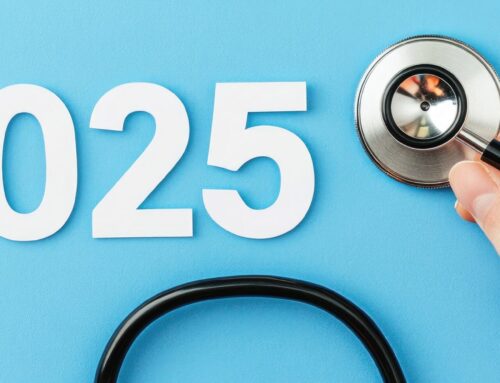For the technology industry, the Consumer Electronics Show (CES) marks the beginning of a new year with fancy new televisions, high tech robots and, increasingly, cutting edge medical technology. As the consumer technology sector continues to merge with the medical and healthcare industries, CES has become an important forum for both understanding where medical and healthcare technology are now, and what the future holds for this rapidly growing sector.
Last year, the biggest news in digital health was that the Centers for Medicare and Medicaid Services (CMS) added Current Procedural Terminology (CPT) codes so that physicians could bill for the time they spend reviewing data generated from remote patient monitoring. This was certainly big news (check out our review of the opportunities and barriers of these new codes), but CES 2019 has shown that these new CPT codes were more like throwing gasoline on an already raging fire—from vendors and providers to payers and patients, the overwhelming take away from CES 2019 is that connected health is already here and will only become more central in the year ahead.
Payers Make Their Mark
Cigna’s Executive Vice President and Chief Marketing Officer, Lisa Bacus, began her talk with some sobering facts—that for this first time in over two decades, life expectancy has declined in each of the last two years and over 150 million Americans struggle with at least one chronic disease. Digital health can be a game-changer in reversing these trends by increasing access and reducing complexity, ultimately allowing patients to take control of their own health in a way that improves health outcomes and reduces costs. Cigna and other health insurance companies recognize that they can make both their customers and stockholders happy by investing in and adopting connected health solutions.
Cigna is investing in digital and connected health both internally and externally, including acquisitions, partnerships and internal incubation of new technology. On the chronic disease front, Cigna has recognized the importance of both remote biometric monitoring and digital therapeutics as key to managing and preventing chronic diseases like diabetes and hypertension. An engaged customer is a happy and healthy customer, and those kinds of customers are good for both population health and the healthcare industry’s bottom line. Although it wasn’t said out loud, it seems clear that private payers will eventually follow the lead of CMS and begin (or expand) payments for connected health.
A Premium on Data
How much is data worth? One estimate puts the Big Data Economy at upwards of $200 billion. Hu-Manity Chief Operating Officer Michael DiPalma explained that their research found that each patient record carries an intrinsic value of up to hundreds of dollars to thousands of dollars. Healthier patient records are worth less while patients with complex or co-morbid clinical conditions are worth more, but all types of patient records will be critical in training the AI and ML models that will likely transform healthcare over the next decade.
The value of clinical data, however, assumes that the data is accurate. Unfortunately, researchers estimate that 40-50% of individual level electronic medical records contain substantive errors or inaccuracies. Moving forward, it will be critical to not only collect more data, or even the most useful data, but to collect accurate data.

Big Tech Moves in, but won’t solve everything
It’s no surprise that big technology companies are continuing to move into the healthcare space— one of 2018’s most exciting and innovative tech products was an FDA-cleared Apple Watch. Several speakers and industry experts agree that digital voice assistants like Alexa, Siri and Google Assistant will eventually provide an important and powerful new interface for collecting and delivering health information, but the industry has not figured out how to implement that technology in a safe, HIPAA-compliant way.
A common refrain throughout CES 2019 was an emphasis on integration, collaboration and interoperability. Axios Chief Technology Correspondent Ina Fried observed that while big tech companies are moving aggressively and overtly into the healthcare space, carving out their place in the healthcare market, no one company will completely dominate the space as Amazon has done with online retail. While Apple (for example) isn’t beholden to the operational and financial norms of the present day US healthcare system, one of the reasons digital health has grown exponentially over the last few years is that the consumer technology companies that have led this paradigm shift have put the user (or patient) at the center of the design process. For this trend to continue, user and patient experience must remain a critical metric for success. More and more, this means that not only must devices, services and platforms integrate, they must do so seamlessly in a way that avoids the pain points of traditional, fragmented healthcare. The biggest market gains won’t come from a walled garden approach as Apple has done with the iPhone and iOS, they will come from the companies that produce the most insightful, game-changing AI and machine learning models that are leverage open (but secure) data in a way that transforms the dynamic of the physician and patient relationship.
Looking Forward
In the near future, we won’t be discussing digital healthcare, it will simply be healthcare. As we move into 2019, our team at HealthSnap is encouraged by what we saw at CES—a future that puts the patient at the center of their own healthcare. Our platform empowers patients by collecting and interpreting their data in a way that allows physicians and caregivers to personalize their care to a specificity never before seen—it’s an exciting vision for the future, but it’s also a vision that we’ve been working on since 2015 and are already implementing today.
Yours in good health,
Yenvy Truong
CEO and Co-Founder of HealthSnap











